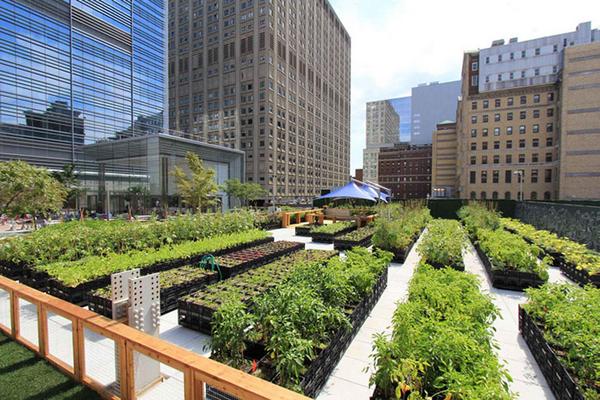City Blooming - Truths
City Blooming - Truths
Blog Article
Little Known Questions About City Blooming.
Table of ContentsSome Known Incorrect Statements About City Blooming The smart Trick of City Blooming That Nobody is Talking AboutThe Facts About City Blooming RevealedExamine This Report on City BloomingGetting My City Blooming To Work
Intrigued in growing food for sale in the City of Chicago? Below is a listing of regularly asked questions relating to the regulations and guidelines that growers should consider when intending a city agriculture project.
The zoning amendment does not customize any other codes dealing with composting, building authorizations, purchasing or renting City had property, service licenses or ecological contamination. There are existing codes that regulate these issues and they stay completely result and might apply to your task. Community yards are typically owned or taken care of by public entities, public organizations or community-based organizations and kept by volunteers.
Urban ranches expand food that is intended to be marketed, either on a nonprofit or for-profit basis. Because of their industrial function, urban farms need a company permit. Yes. An area garden is enabled to offer excess create that was expanded on site if the sales are accessory or subordinate to the garden's primary function explained above.
Fascination About City Blooming
Composting is allowed however only for plant material that is created and utilized on site. The quantity of garden compost product can not exceed 25 cubic lawns at any kind of given time according to the criteria in 7-28-715 of the City's Municipal Code. Yes. Since the dirt at many brand-new garden sites needs changing, compost, soil, wood chips, or other products can be obtained to create or enhance the expanding space - balcony and patio garden design.

If a structure authorization is required after that the hoophouse will certainly be thought about an accessory structure. You can discover even more regarding the structure permit requirements by contacting the Department of Structures. The 25,000-square-foot dimension restriction is planned to stop a single neighborhood garden from controling an offered block or interfering with the block's existing household or commercial personality.
The limitation does not apply to yards situated in Public Open Area (POS) districts. Can there be more than one area yard that is 25,000 square feet on a single block? Secure fencing is not needed, nevertheless, gardens that have huge car parking locations may be called for to mount fencing or other landscaping attributes.
Some Known Details About City Blooming
B1 & B2 areas need that all commercial usage tasks be conducted indoors. Is secure fencing needed for metropolitan farms? Fencings might be called for, along with landscaping and testing, for certain vehicle parking areas and outdoor work or storage locations depending on place and the details task taking location.
Yes. Urban farms need structure authorizations and zoning authorizations prior to building and construction. Various other kinds of city evaluation might be required depending upon details structures, tasks, dimension, landscape design, licensing, public heath and stormwater administration problems. Much of these demands are identified in the task style or allowing procedure, however, the applicant may be check my reference accountable to independently identify particular licenses or permits that may be required.
Yes. The kind of license is established by what is happening at the website. The Division of Organization Matters and Customer Defense can help identify the certain kind of organization license that's called for. Yes. Off street auto parking is required for a lot of business projects in Chicago. The called for variety of car parking spaces is based on the number of workers working with site and not the square video footage of the growing room.
City Blooming Fundamentals Explained

A city farm can sell compost material produced on site, nevertheless, the procedure needs to abide with the laws in 7-28-715 of the Chicago Municipal Code. Aquaponic systems are enabled indoors on metropolitan farms in several zoning areas.
As much as five hives or colonies of honey might be maintained as an accessory usage. However, beekeepers must sign up with the Illinois Department of Farming. For more details concerning the suggested zoning modification you might call the Division of Housing and Economic Advancement, Bureau of Preparation and Zoning at 312.744.8563.
Farming in cities and city areas A metropolitan ranch in Chicago. Urban farming describes various techniques of cultivating. http://prsync.com/city-blooming/, processing, and distributing food in city areas. The term also uses to the area activities of animal husbandry, tank farming, beekeeping, and horticulture in a city context. Urban agriculture is distinguished from peri-urban farming, which occurs in backwoods beside residential areas.
Getting The City Blooming To Work
, who seek to create social networks founded on a shared principles of nature and community holism. These networks can develop by method of formal institutional assistance, coming to be incorporated into regional community preparation as a "transition town" movement for sustainable urban advancement.
The extra straight access to fresh vegetable, fruit, and meat items that might be realised via city farming can enhance food security and food safety and security while decreasing food miles, bring about lower greenhouse gas discharges, therefore adding to environment change mitigation. Several of the initial evidence of metropolitan farming comes from Mesopotamia.
Report this page